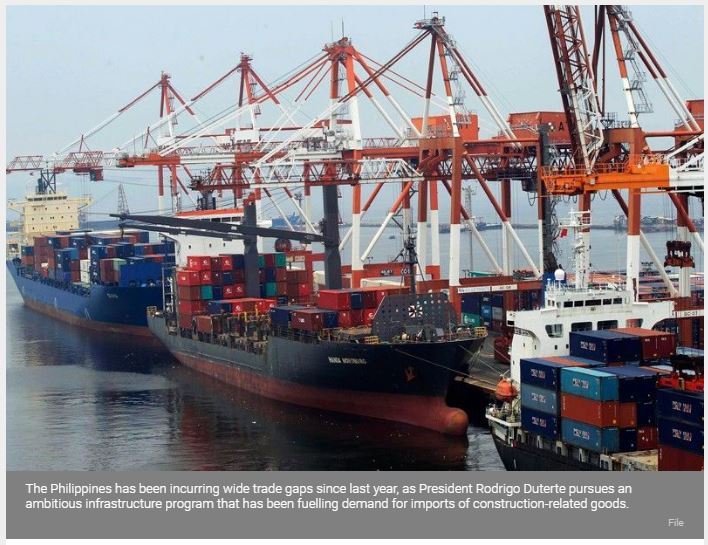Philippine trade gap persists in August
MANILA, Philippines — The Philippines’ trade deficit persisted in August, the government’s statistics agency reported Wednesday, after exports’ sluggish performance failed to match imports’ accelerated growth pace.
The country’s trade deficit stayed above $3 billion for five consecutive months to reach $3.513 billion in August from $3.546 billion shortfall posted in July. In August 2017, the trade gap was at $2.74 billion.
The Philippines has been incurring wide trade gaps since last year, as President Rodrigo Duterte pursues an ambitious infrastructure program that has been fuelling demand for imports of construction-related goods.
The increasing capital goods imports due to the infrastructure boom have reversed the country’s current account surplus to a deficit, pressuring the Philippine peso.
Broken down, exports grew 3.1 percent to $6.16 billion year-on-year from $5.98 billion. Outbound shipments to Japan, a major trading partner, sagged 6.5 percent.
On the other hand, imports went up 11.0 percent to $9.68 billion from a year ago on the back of heightened purchases of electronic products, transport equipment, mineral fuels, iron and steel, among others.
The country’s economic managers have repeatedly said the sustained rise in imports will “support domestic economic expansion.” They have also assured the public that a weaker peso will boost the country’s exports.
But in the second quarter of the year, the Philippine economy slowed down to a three-year low of 6 percent, amid lackluster export growth and as policymakers fight inflation, which has been fanned by a more than 8 percent slump in the currency this year.
“Recent strong rhetoric from the central bank in response to soaring inflation and to a weakening peso could help to stem the currency’s weakness and prevent the trade gap from widening further,” said Nicholas Mapa, senior economist at ING Bank N.V.
“But exports will need to rebound in the coming months to truly make some headway. The prognosis is for the current account to remain in the red, exerting further pressure on the local unit despite [the Bangko Sentral ng Pilipinas’] already very hawkish stance,” Mapa added.
Source: https://www.philstar.com/business/2018/10/10/1858891/philippine-trade-gap-persists-august#6ZqlCkCxzH2HQUC0.99


 English
English




